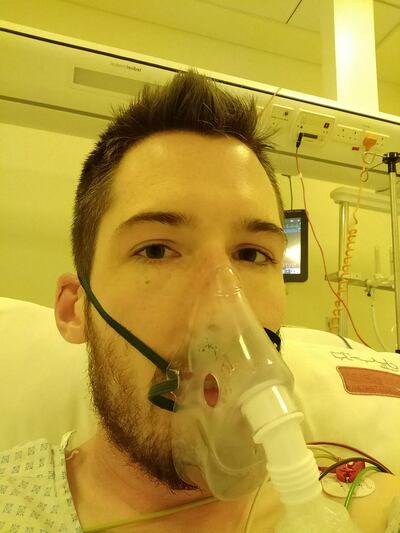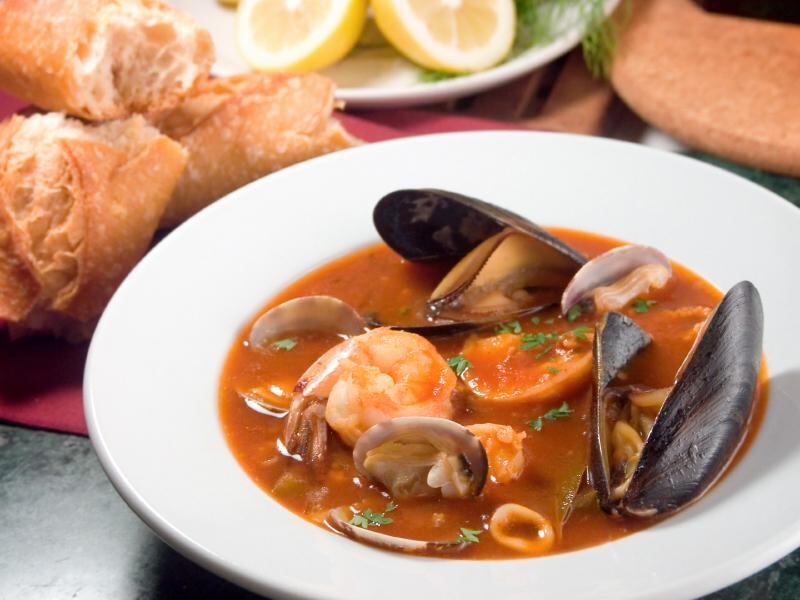I hadn't given food allergies a second thought until someone started passing out bars of Snickers during a school trip to Russia about 13 years ago.
I was more than 3,000 kilometres away in Scotland. However, my twin brother was on the trip and went into anaphylactic shock after eating the offending chocolate bar, with its peanut centre, as his group travelled from St Petersburg to Moscow by train.
His every symptom was relayed to me in real time by a friend, who made a panicked phone call after giving up trying to mime my brother’s worsening condition to Russian passengers confused by the whole charade. Eventually, the train was stopped and my brother taken to hospital, where doctors administered adrenalin until his reaction dissipated. It is a chapter of our family history now referred to as his “funny turn”, and precipitated a purge of all nut products from my parents’ house.
It is difficult to imagine what he went through that night, thousands of kilometres from home. Or it was until about two weeks ago, when I had a funny turn of my own after eating shrimp, and ended up in intensive care at Burjeel hospital in Abu Dhabi. This was not the dire consequence of a gastronomical gamble, but was caused by a shellfish allergy I was not aware I had. The Mayo Foundation for Medical Education and Research in the US says allergies can develop at any time throughout your life. Mine made itself known about 30 minutes after I ate my first shrimp taco.

What started out as an irritating tickle in my throat and a rash that crept up my neck, soon became life-threatening. By the time I arrived at the hospital, I was dizzy, unable to catch my breath, with a tingling sensation in my hands, feet and mouth, and I was admitted to the ICU suffering from anaphylaxis, tachypnea and tachycardia, a condition that causes your heart to race to more than 100 beats per minute, and can lead to cardiac arrest. Google makes work for idle hands, and I could do little else in my hospital bed that night, but research the medical terms the doctors used to explain why I had almost died.
The gravity of my condition was already clear to see: coloured wires led to circular sensors on my chest; I bore the marks of half a dozen steroid and adrenalin injections; and a nebuliser had been placed over my mouth. Two nurses also sat vigil outside my room, watching me through a window as I tried unsuccessfully to ignore the intravenous drip in my left arm.
The testimony of my twin brother had made me aware of how dangerous reactions can be, although I still felt ill-equipped to understand my own condition. While my brother has spent the past 13 years studying labels on food for the words “may contain nuts” and choosing which restaurants to eat at carefully, I have been far less cautious when it comes to food. How do allergies differ? And, being selfish, how inhibitive can an intolerance to shellfish be? “Allergies fall into two categories,” says Dr Marilyn Glenville, a nutritionist and psychologist who last year opened Glenville Nutrition Centre in Dubai.
“The first is IgE, which includes milk, wheat or nuts. And until enough clinical trials have been done, the person who is allergic to, say, peanuts has to keep away from them forever. In some cases, even the odour is enough to set them off, and could result in an anaphylactic shock.
“The other group of intolerances are driven by an IgG antibody. These owe more to frequency of consumption and overload. If someone took the food source out of their diet, or if they had not eaten as much and gradually introduced it after a year or so, the body may be able to tolerate it.”
I was moved from the ICU to a regular ward after 24 hours of observation, but was not yet out of the woods. While the initial diagnosis was a severe allergic reaction, its impact on my embattled immune system – my white blood cell count was described by my doctor, Abdul Hakeem Muhammed, as "very high, about 42,000 cells" – raised the possibility of other health problems. As I was wheeled to a new hospital room, I was told that tests eliminated pneumonia, but that I should expect a visit from an oncologist. After eating a little seafood, I was suddenly facing the Big C.

The oncologist ruled out cancer, mercifully, but not until I spent a few hours mulling over my mortality. A hospital is a haven when you know you are sick, but there is no refuge if you think you are dying, and the only thing I could do was lie there alone and cry, drying my eyes when a nurse arrived to replenish my IV and administer more steroids. It is little wonder that my dizziness, accelerated heart rate and breathing difficulties returned later that day, the symptoms of an anxiety attack masquerading as another allergic reaction. It was a condition treated by handing me a paper bag with instructions to “hold this over your mouth and take deep breaths”.
I am embarrassed that happened, and apologised earnestly to Dr Muhammed for causing a fuss. He was more concerned that I understood the seriousness of my newly discovered allergy, and did not risk returning to hospital. “We had to put you in the ICU because your condition was very bad,” he said. “This was life-threatening. You must not have shrimp again.”
Not to worry doc, I’ll think twice before going near another shellfish.
Recipes for disaster: five hidden allergens to be aware of
Allergens can crop up in unexpected places and if you have a food allergy, it is important to be vigilant, whether you are buying groceries or cosmetics. Here are five products that contain hidden allergens.
Chewing gum
People with an intolerance to salicylate can have an allergic reaction if they chew gum. Symptoms range from nausea and headaches, to swelling, hives and difficulty breathing.
Play-Doh
If someone in your family has a wheat allergy then play time’s over. The reaction can manifest itself in a rash and itching, and even anaphylaxis.
Lipstick
While “pearlescence” means shiny lips to most women, to those with a fish intolerance it can lead to dryness, itching and mild swelling around the mouth. The lipstick’s sheen is created by guanine, which is often derived from fish scales.
Worcestershire sauce
Anyone with a fish allergy should be wary, because it includes anchovies. Hives is a common reaction.
Marshmallows
They contain gelatin, made of proteins from animal products such as fish bones. Symptoms of an allergic reaction include hives and nausea.







